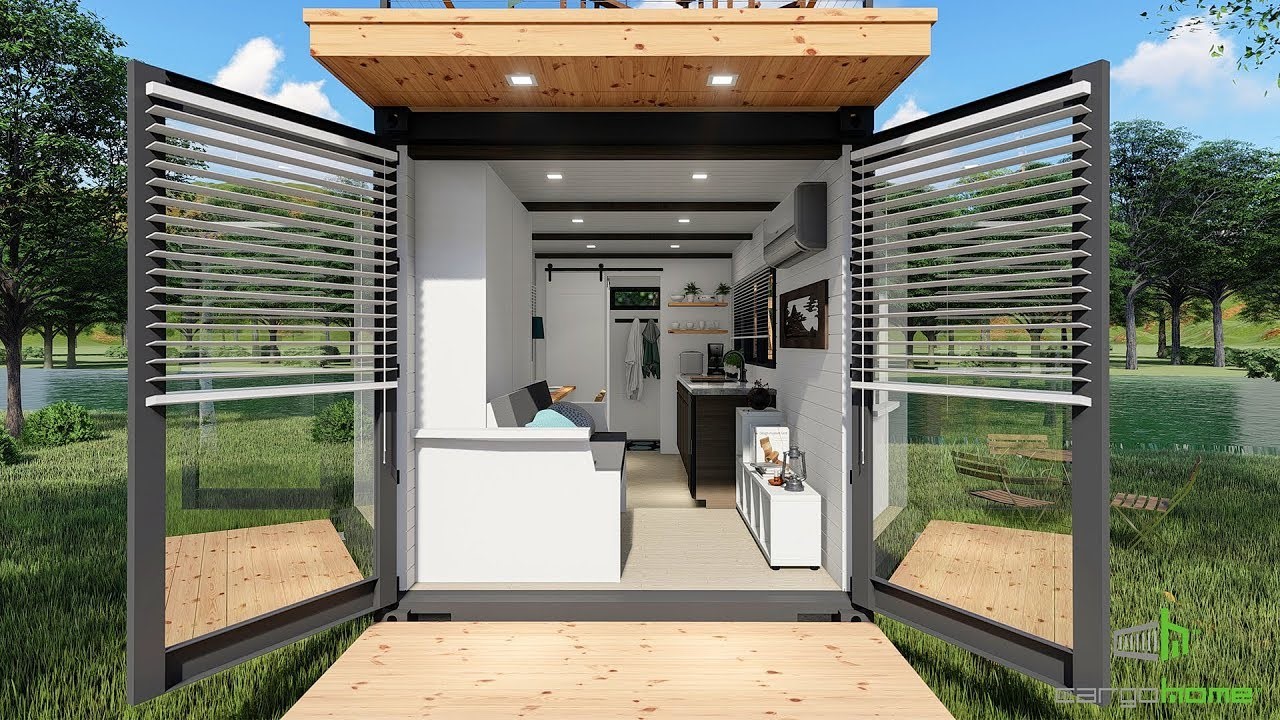As time goes by and our society becomes more environmentally aware, we can see the trend of sustainability bringing some pretty novel changes into our lives. Some of them, in the ways we least expect. Is there a better proof to this claim than sustainable container homes – a worn-out piece of metal that would otherwise become a piece of junk can now be turned into the affordable, eco-friendly and stunning home from your dreams.
If this idea has sparked your imagination, here are a couple of steps you should take to make your dream come true.
Start with a plan
Every great project starts with a plan and your container home is no different. Keep in mind then, that besides the design where you’ll most likely put the most of your attention, your small project should also cover the following topics:
- Budget considerations
- Legal considerations (you need to check the local legislation regarding container homes)
- Practical considerations (room layout)
- The number of containers you are going to need (the standard container dimensions are 8”x 20” and 8”x 40” so you’ll probably need at least 3-4 of them)
- Associated costs (wirework, connection to the utility network, etc.)
Find yourself quality containers
Shipping containers can be acquired in several different ways. One of the most popular is definitely placing your order online from some of the affordable Asian vendors. However, the containers you’ll get this way tend to vary in quality and can’t be inspected before purchase. This problem can be solved by visiting a local market for used containers. Still, since you are looking for the building blocks for your new home, we recommend buying only from the trusted suppliers. If you want to take a glance at the current offer, you can check here.
Lay the foundations
Yes, although they have very little in common with the traditional brick and mortar buildings, modular container houses still require a solid foundation that will lend them support and structural integrity. So, make this your first step once the containers finally arrive. Here, you will have to choose between the three most common options:
- Concrete piers – The simplest and the most affordable foundation type
- Slab on grade – A solid concrete slab that rests on the ground level (grade)
- Pile foundation – The most reliable and, at the same time the most expensive option, often used when the soil type is too weak.
No matter which of these options you eventually choose, it is highly recommended to hire an experienced contractor to land you a hand.
Do the metalwork
And now, it’s time to start reshaping the metal containers into the construction you will soon call home. The following tasks can roughly be divided into three steps:
- Cutting the containers – This way, you will get the modules that will fit your floor plan and make the room for windows and doors. The tools you are going to need for this task are a cutting torch, jigsaw, grinder and plasma cutter.
- Piece the modules together – This step is conceptually simple but somewhat hard to pull off in real life. First, you will need to rent the crane that will allow you to easily move the heavy modules around. Second, you will need to spend some time practicing the art of welding which still makes the most secure and safe way of piecing different containers together.
- Reinforcing the containers – Shipping containers are the strongest at their corners. Admittedly, this distribution of structural integrity is not the best in the world so it would be a good idea to reinforce your walls with metal plates and steel rod. Also, be sure to make these upgrades only after you consult a professional architect.
Taking care of the doors, windows, and floors
And now it’s time to wrap up the construction works by installing doors, windows, and floors. The only thing we can say in this regard is to double-check all the measures and work step by step, starting with the frames. Also, we’d like to point out that shipping containers represent an inherently sustainable housing option. It would be such a shame to waste these properties with doors and windows that do a poor job at heat retention. Consider spending a couple of bucks more on an insulated variety.
From this point on, it’s all a matter of design and turning your modular house into the dream home you’ve always wanted. Congratulations, you’ve accomplished a big thing and did something good for Mother Earth. Not too bad for simple construction work, huh?





Like this article? Share with your friends!